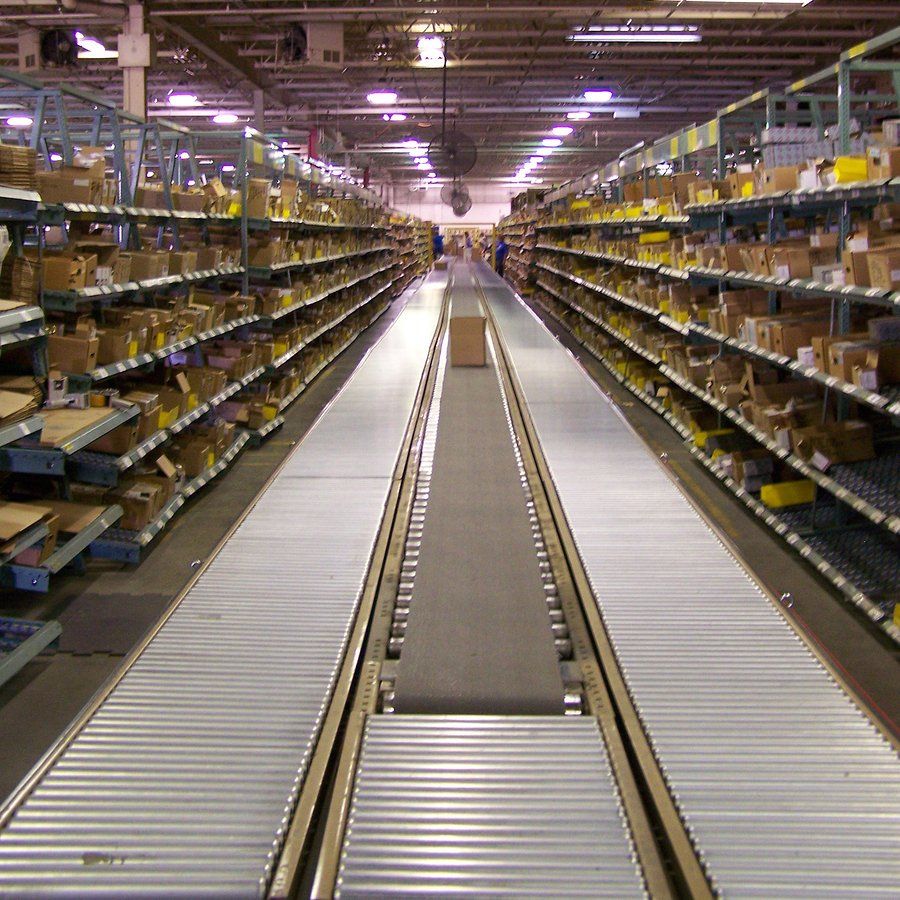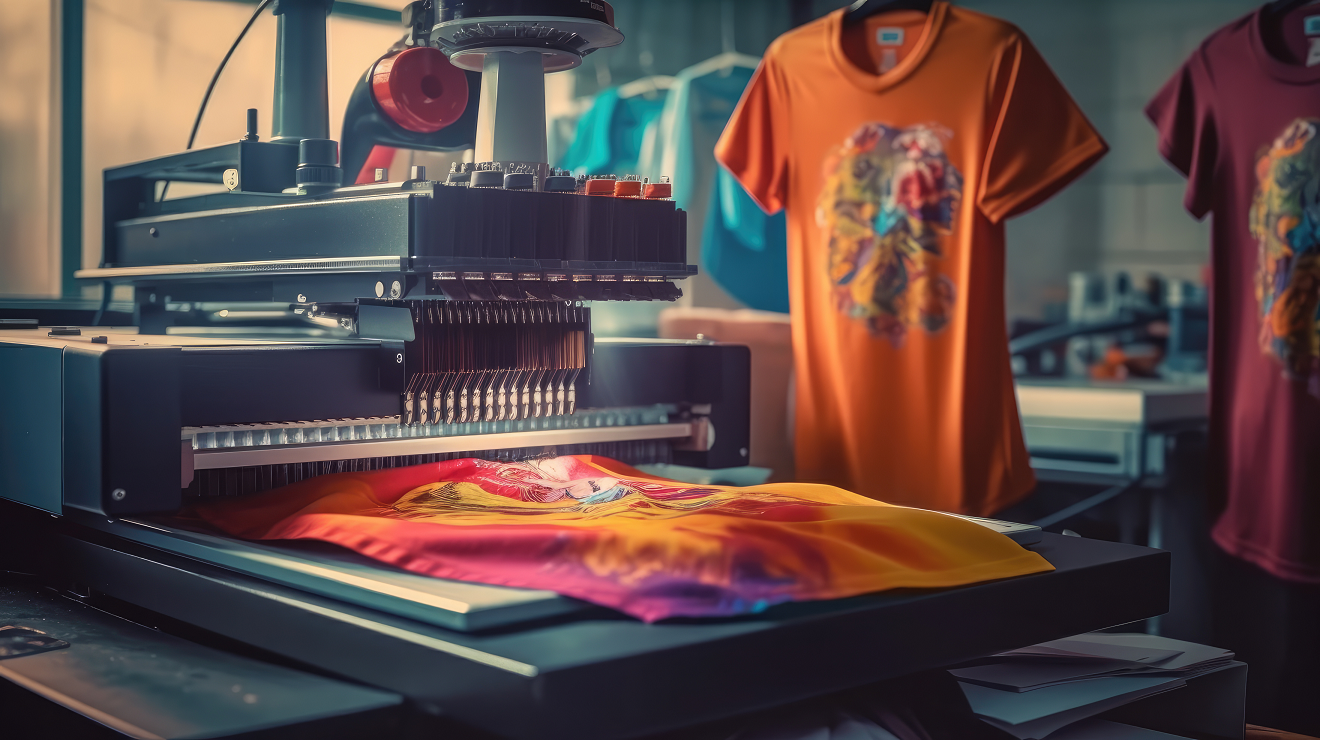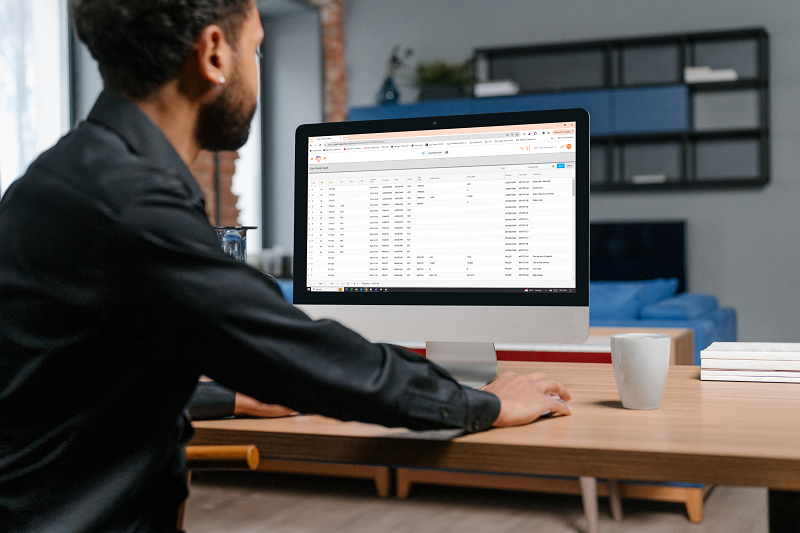Level Up your Apparel Warehouse with an Industry WMS Solution
Finding the optimal layout for your warehouse can be the difference between success and failure. From picking and packing procedures to general layout, your business depends on your ability to move items in and out as quickly as possible. In the past, working to find the best layout for your warehouse was a tedious game of trial and error, but advances in warehouse management software make those shots in the dark a thing of the past. Modern warehouse management software can help you understand every aspect of your business better, and it gives you the power to analyze and correct any problems that are holding up your process.
Kenneth Miesemer, president of the Warehousing Education and Research Council, suggests that collecting the right data and keeping your analysis simple is the key to a successful warehouse design. “Database development is the most important part of any warehouse sizing and design process — from that data, companies can model actual facility throughput, based on daily shipments and production/receiving cycles,” he says. Your warehouse management software will deliver this data, but only if it’s implemented and used properly.
Once you’ve chosen and implemented a warehouse management software solution, you can start to dig in and redesign your warehouse for success. Follow these simple tips and your operations will be running smoother than ever:
Redesigning For Space and Efficiency
Assess Your Existing Layout
Before you start making changes to your warehouse, it’s important to have a full understanding of your current capabilities, strengths, and weaknesses. Start with a full audit of your current space. How much square footage do you have available? Are you already taking advantage of vertical space and mezzanine opportunities in your current facility?
Until you know the answer to these questions, you can’t start an effective redesign. Make sure your audit is thorough — there are a few guides that can help you get the most out of it. If you’re considering a total redesign of your facility, make sure to talk with an architect or consultant before making the plunge. A good understanding of your space needs and current usage can give valuable clues to your architect or consultant on the best design solutions to implement.
Are You Storing Goods Economically?
While generic storage products may be cheap and easy to find, they may cost you money in the long run. Use your warehouse management software to analyze your inventory and find the items you hold and ship most frequently. Once you have a clear picture of your inventory, you can start making decisions about the right storage racks and bins.
If your most popular items are large or irregularly shaped, it might make sense for you to have some custom storage products made for you. Depending on your clients, your inventory could change frequently or you could see surges in shipments of different items at different times of year. If that sounds like your warehouse, consider tracking those changes and implementing a rotating set of differently sized storage racks and bins optimized for that time of year. Maximizing your use of square footage is essential to getting the most productivity out of your warehouse, and finding exactly the right bins and racks can help give you some extra space.
Analyze Your Picking Methodology
Finding the right picking methodology makes a huge difference in the time your employees waste moving around the warehouse floor. One study found that up to half of the time your employees spend picking items is spent in unproductive travel. You can use your warehouse management software to determine how much time your employees spend finding and moving items in your facility, then look at the numbers to find any bottlenecks.
There are a number of different strategies to deal with picking slowdowns, including batch and cluster order systems. If your facility has huge square footage, you’re in luck — it’s generally accepted that picking vertically takes longer than picking horizontally. If (like most people) you just don’t have the space for an entirely eye-level inventory, make sure to put your most popular items closer to the ground. Don’t be afraid to run a few experiments or try creating a warehouse within a warehouse so you can tinker with your picking process while maintaining a control group. You can use your warehouse management software to compare the results from different picking processes, and implement the one that maximizes your productivity.
Assess Your Energy Use
One of the easiest ways to lose money is excessive, unplanned energy use. If you keep items in cold storage or other climate controlled conditions, energy costs can add up quickly. Thankfully, you can use your warehouse management software to cut back on energy use and find problem areas where changes are needed. Your warehouse management system’s ledger functionality should allow you to track any major changes in power and gas use along with any changes in personnel, warehouse procedures, or layout. Sometimes, one careless employee can be the source of a major power drain, and these reports will help you identify and fix the problem. The biggest chunk of your power bill each month goes to lighting — around 37% for the typical warehouse. Consider moving to motion-activated, timed, or energy-efficient lighting options, as they will help shave your monthly power bill down quite a bit.
Heating, cooling, and refrigeration make up another 22% of the average warehouse’s power bills. You can save big in these areas by making sure your redesigned facility is properly insulated, minimizing outside air infiltration. If your facility has a refrigerated storage area, installing sensors on the doors to make sure they’re shut is always a good idea. You can even integrate these sensors into your warehouse management software to stay on top of any alerts.
If you’re considering a comprehensive overview of your facility, consider some strategically placed windows. Analyze the areas of your warehouse that use the most daytime lighting and have the most employee traffic, and work with your architect to get some natural sunlight in those areas. Not only is it easier on your employee’s eyes, it’s another way to cut back on lighting costs.
Are You Using the Right Shipping Containers?
Just like storage containers, using the wrong shipping containers can cost you a surprising amount of time and money. However, there is one major difference — when it comes to shipping, irregularity and custom bins can make your life much more challenging. Most of the time, when you ship items from your warehouse, you’ll be loading them up onto a mail truck or container truck. The standardized shipping container has changed the world, and ultimately you should plan on finding shipping materials that allow you to maximize the use of space in one.
Generate an inventory report with your warehouse management software to determine which items ship most frequently. Use that data to find shipping packaging that will hold the maximum number of those items and fit most easily into a standard shipping container. At most warehouses, two or three different bins are found to be most effective. Once you find a solution that works, stock up on it and stick with it – this will make life much easier for your employees and those picking up your goods at your loading bay.
Redesigning For Your Employees
Are Your Employees Getting The Job Done?
One of the major benefits of modern warehouse management software is the ability to get a comprehensive picture of your personnel’s productivity and effectiveness. Some warehouse management software solutions even incorporate RFID badge tracking that lets you analyze exactly where in the warehouse your employees are spending their time.
You can match that location data with productivity reports to get a true picture of where your employees are and what they’re doing when they’re there. As mentioned earlier, your floor employees might be spending a lot of unproductive time walking around the warehouse — with these tracking tools, you can determine just how much time with extreme granularity, and implement layout changes to cut down on wasteful movement.
Motivate Good Employees With Data-Driven Incentives
The bad news is that all these tracking tools might uncover some seriously disengaged employees. If your employees are spending half their day in the break room, it might be time for an intervention. Studies suggest that many employees become disengaged when they feel unappreciated — in fact, feeling unappreciated is the number one reason that Americans quit their job.
If your warehouse management software reveals a plague of disengagement among your employees, take your redesign as an opportunity to get them back on board. For example, you can build a special break room with video games, comfortable chairs, and other amenities, and make it the center of some friendly competition.
Every week, you can give the top employees in the top 10% for productivity a key to use it as they want. People tend to respond well to positive encouragement and friendly competition, so don’t be afraid to complement your employees on good performance.
Redefining For The Future
Plan For Future Changes
No matter how well your redesign goes, new technologies and methodologies will make it obsolete. This isn’t any reason to get down, it just means that in the future, you’ll be able to get even more productivity out of your facility with your warehouse management software. When you plan your redesign, make sure you make it easy for your successors to upgrade facilities and software as needed.
This is especially important with software and hardware — a recent study found that 71% of Fortune 500 companies are still running ancient mainframe computers incapable of utilizing decades worth of advancements in software. When all of your business processes rely on stone age hardware, it’s easy to get trapped in a vicious cycle — an update would bring operations to a halt and cost a huge amount, but the opportunity cost of not updating gets greater every day. Always plan to expand and reorganize, especially when it comes to your hardware and software.
Keep It Simple
At the end of the day, a successful warehouse redesign is all about moving items in and out of your facility as quickly as possible. Keep this goal in mind when you approach your redesign. Donald Derewicki, president of Gross & Associates, gives the following advice: “Examine the volume of receipts and shipments—determine how much is inbound and outbound, and the characteristics of those shipments … In most facilities, inventory is the primary space driver—companies must consider how much inventory they need to contain, and the associated pick facings needed to handle inventory.”
Derewicki adds, “Profiling projected inventory as accurately as possible is key. A 20-percent deviation on a 200,000-square-foot storage area results in a 40,000-square-foot shortfall or surplus. A company’s planned number of SKUs, along with the associated cube, velocity, seasonality, and inventory handling characteristics are all critical to the design. And, companies must incorporate lot number control in projected inventory profiles.” While there may be a lot of details to keep track of, the core of a successful redesign is in identifying, tracking, and forecasting your key performance indicators (KPI). Staying on top of these KPI is easy with a well implemented warehouse management software solution — most will be able to produce real-time reports on the number of SKUs in your warehouse, your total inventory, and more.
Still Looking For Answers?
Even with all the time in the world, planning a warehouse redesign is a grueling process. If you know you’re ready for a new layout but don’t have the time to make it happen, Apparel Business Systems can help!
Our expert consultants can find the right solutions to your space and efficiency issues, and our warehouse management software is custom-designed to help you track and analyze every aspect of your operation. Contact us today for more information.


We will get back to you as soon as possible.
4325 Alexander Drive, Suite 100
Alpharetta, GA 30022-3740
Apparel Business Systems | All Rights Reserved











